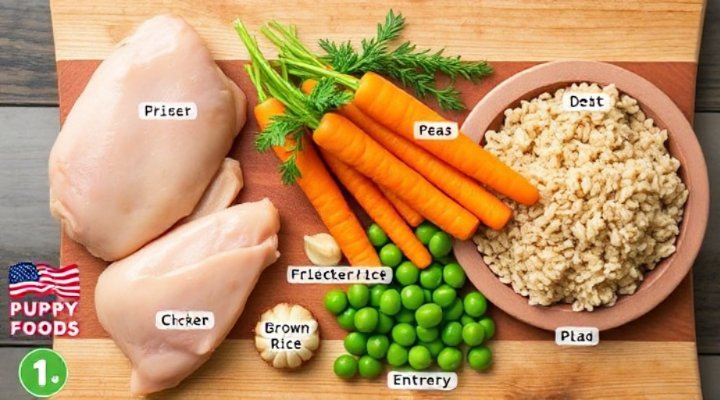Welcoming a new puppy into your home is an exciting time, but it also comes with important decisions – especially about their nutrition. This puppy food guide will help you navigate the world of puppy nutrition to ensure your furry friend gets the best start in life.

Understanding Your Puppy’s Nutritional Needs
Puppies have different nutritional requirements than adult dogs. They need more protein, fat, and certain vitamins and minerals to support their rapid growth and development. According to the American Veterinary Medical Association, puppies typically need about twice as many calories per pound of body weight as adult dogs.
For example, when I first got my Labrador puppy Max, I made the mistake of feeding him adult dog food. He quickly became lethargic, and our vet explained that he wasn’t getting the proper nutrients for his growing body. That’s when I learned how crucial proper puppy nutrition really is.

Types of Puppy Food: Which is Best?
There are several types of puppy food available, each with its own benefits:
- Dry Kibble: Convenient and good for dental health
- Wet Food: More palatable and hydrating
- Raw Food: Mimics a natural diet but requires careful handling
- Fresh Food: Nutrient-rich but often more expensive
Our article on Farmer’s Dog Food Cost Analysis provides great insights into fresh food options for puppies.

Key Ingredients to Look For
When choosing puppy food, always check the ingredient list. Look for:
- High-quality animal protein as the first ingredient
- Healthy fats like omega-3 and omega-6 fatty acids
- Digestible carbohydrates
- Essential vitamins and minerals
Avoid foods with artificial preservatives, colors, or excessive fillers. For puppies with sensitive stomachs, you might want to check out our guide on hypoallergenic dog food.

Feeding Schedule by Age
Puppies need to eat more frequently than adult dogs. Here’s a general guideline:
| Age | Meals per Day |
|---|---|
| 8-12 weeks | 4 meals |
| 3-6 months | 3 meals |
| 6-12 months | 2 meals |
Remember, these are just guidelines. Always consult with your veterinarian for personalized advice, especially for large breed puppies who have different nutritional needs.

Transitioning to Adult Food
Most puppies can transition to adult food between 12-24 months, depending on their breed size. The American Kennel Club recommends making the switch gradually over 7-10 days to avoid digestive upset.
Start by mixing 25% adult food with 75% puppy food, then gradually increase the adult food proportion. Monitor your dog for any signs of digestive discomfort during this transition.
Common Puppy Feeding Mistakes to Avoid
Even with the best intentions, many new puppy owners make these common mistakes:
- Overfeeding (leading to obesity)
- Feeding table scraps (can cause picky eating)
- Not adjusting portions as the puppy grows
- Choosing food based solely on price
For more tips on proper puppy care, check out our best puppy food guide.
Final Thoughts on Puppy Nutrition
Choosing the right food for your puppy is one of the most important decisions you’ll make as a pet owner. A high-quality puppy food will support their growth, development, and overall health. Remember, every puppy is unique, so what works for one might not work for another.
When in doubt, consult with your veterinarian. They can provide personalized recommendations based on your puppy’s breed, size, and health status. After all, a well-fed puppy is a happy, healthy companion for years to come!
Related Keywords: puppy nutrition guide, best food for growing puppies, how to feed a puppy, puppy diet plan, healthy puppy food options
